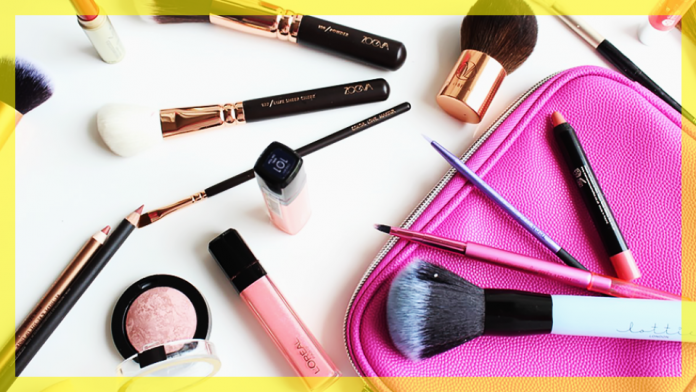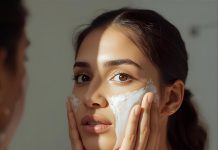What you already know
User reviews are a large part of the online shopping experience, because when you can’t first-hand sample a product, you must rely on someone else that has. In the world of skincare and cosmetics, user reviews play a major part in boosting sales. Especially for young companies, it takes a lot of communication to convince consumers to spend money on products they are unfamiliar with. The recent rise of companies like Glossier, Milk Cosmetics and KKW Beauty have illustrated the power of communication online, and how a digital presence can convert into real life sales.
Each of these brands among many others, have established their identity on two strong pillars- A defined aesthetic that they carry through their social media communication and packaging; and varied forms of brand-to-consumer dialogue channels through influencers.
When people shop online, they watch YouTube reviews, Instagram tutorials, and blog posts to decide whether a product is worth their money. With international shipping and borderless Internet, there really is nothing stopping a girl in New York from buying French pharmacy skincare goods or a girl in Delhi from buying a Kylie lip-kit if she pleases.
Kim Kardashian West sold out her perfume before anyone could even sniff it in person, and when Rihanna launched Fenty Beauty people were lining up outside stores to purchase her lipsticks as if they were the new iPhone X. Influence on social media comes from posting consistent content, because let’s face it, we are all mildly addicted to our phones.
This constant interaction that comes from social sharing really helps to move product from shelf to cart because if you show someone how good a lipstick looks on you, you can convince them that they need it too.
Who is an influencer?
While some companies like to directly engage with consumers by building out their own content, most companies will engage with influencers to tap into their audience base.
Up until the early 2000’s, actors, supermodels and musicians were the only influencers in the beauty market and they appeared in all advertising for a brand. Now with the Internet garnering its own audience, the person on the box may not be the only influencer the brand works with. L’Oreal is one such beauty market giant that continues to work with some of the most iconic women in film as ambassadors, but they also have a slew of YouTubers and bloggers who post reviews and tutorials online.
Chief of Content at Nykka, Madhavi Irani says, “Using Bloggers is a great way for fledgling and growing businesses to get traction and gain visibility. Each of these bloggers brings a loyal fan base that avidly follows them, and they will continue to attract eyeballs and influence.”
However too much of a good thing can be bad, and with a saturation in the world of blogging, it is sometimes hard for audiences to keep going back to watching tutorials and reviews week after week. Once you’ve seen a “how to achieve the perfect smoky eye” tutorial is there really a need to watch fifty other videos?
The millions of subscribers that make up gurus have online would prove otherwise, because many women and men are making a full-time living working with brands and products to create various types of looks and then sharing the same with their viewers.
One of the positive outcomes of the saturation in the filed of blogging is the rise of male bloggers in the beauty space who are breaking gender stereotypes in the beauty industry. Makeup brands like CoverGirl and ColorPop are working with male influencers and this breath of fresh air is helping many young people feel less afraid to express their true self. Even though the world of makeup and skin care has been viewed as a feminine space, it really is a gender-neutral zone. Even macho men on screen have to wear lipstick, and even here at home men like Cory Walia and Mickey Contractor have dominated the beauty industry for decades. It is interest and talent rather than gender that makes a person worthy of being in this space, and to a large extent influencers online have helped make that happen.
Influencers can be actors, models, makeup artists, self-taught makeup gurus and just about anyone else that has the skill and a good Internet connection.
So what separates the wheat from the chaff?
When beauty and fashion blogs first emerged on the scene in the mid to late 2000’s there was a distinction between social media influencers and bloggers. Today the lines are blurry, but for the most part digital influencers can be categorized as bloggers and makeup artists.
Bloggers and other self-taught makeup gurus often are good at communicating their personality online and they tend to keep their audiences interested with humor, tips and tricks. Makeup artists, on the other hand, are veterans in the industry that have far more experience but may not be as engaging as their blogging counterparts.
Where a blogger may share their point of view and what products work for them specifically, a makeup artist can share a more detailed review of products since they work with a more diverse clientele and are constantly creating looks for people with all different types of skin tones and textures. Ace make up artist Ojas Rajani shares, “The vision and professional approach, as well as the technical know-how that a makeup artist has, is far more, and therefore the trends and forecasts decoded by makeup artists have far more finesse.”
Especially in the Indian market, audiences are getting increasingly interested in makeup artists; brands are collaborating with artists in the same capacity as bloggers. The Internet is a large playing field and there is enough room and audience for everyone. However, when it comes to influence converting into sales it’s a slippery slope. Even with advocacy from a blogger, a potential customer may lean on the recommendation of a makeup artist more, because where a blogger says ‘ this really works for me’, a makeup artist is saying, ‘ this works for a large number of my diverse clientele’.





























